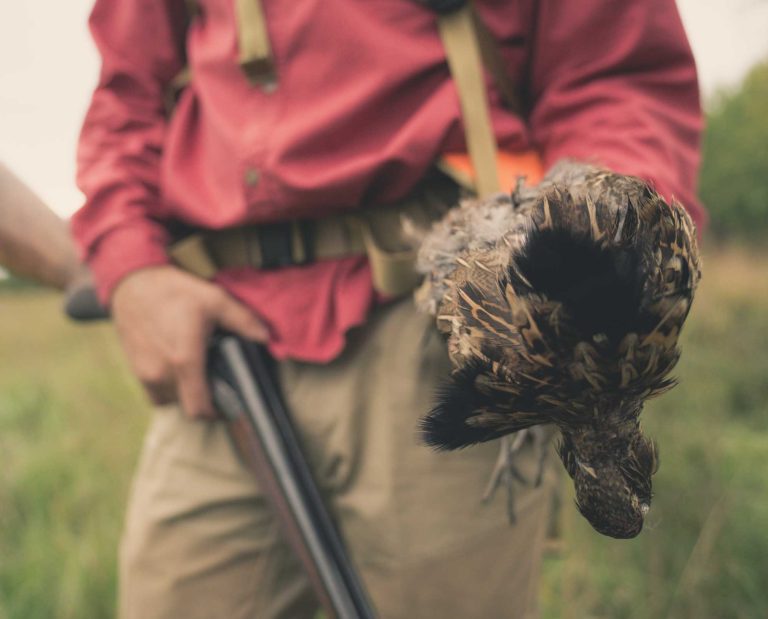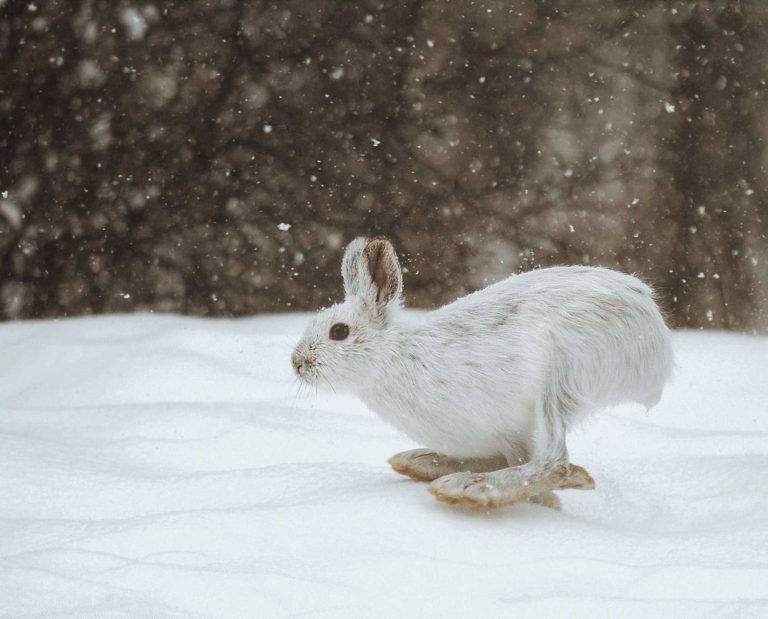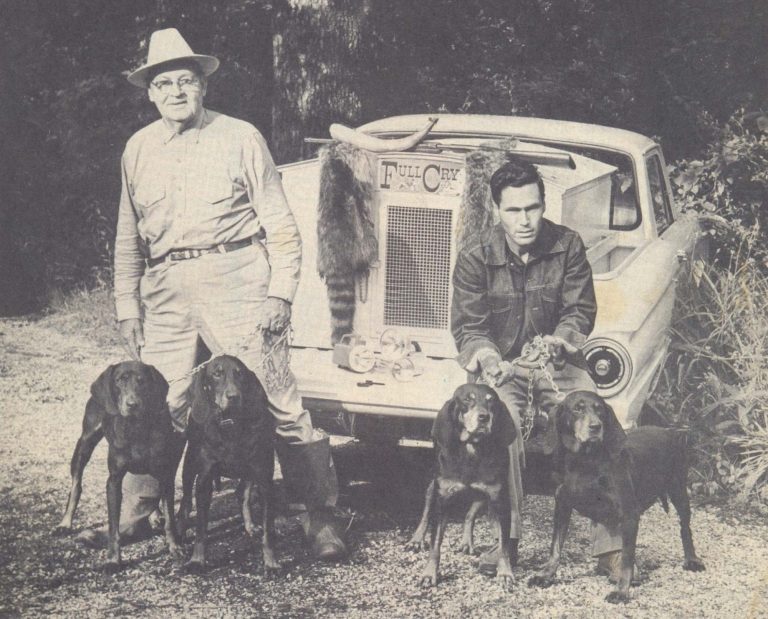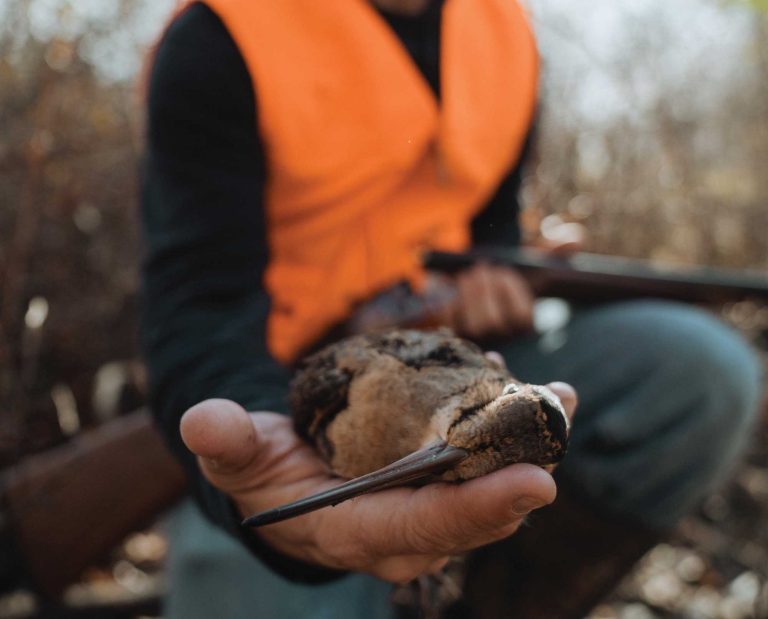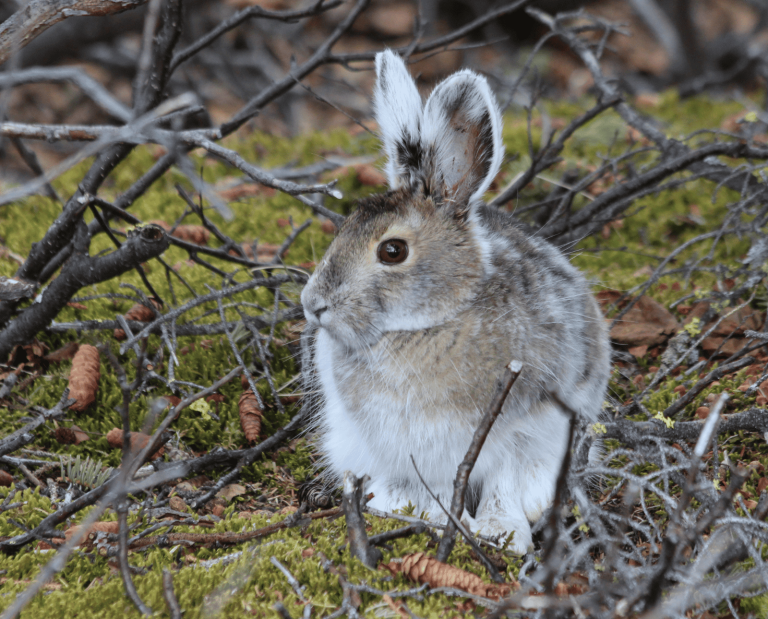Eastern Cottontail Rabbit – History, Hunting, and Biology

Learn About Eastern Cottontail Rabbits and How to Hunt Them
Whether you live in a rural area or suburban neighborhood east of the Rockies, you’ve likely had backyard visits from eastern cottontail rabbits (Sylvilagus floridanus). They can thrive in many different habitats across a wide range in North America, and are the most common of the New World rabbits. While rabbit hunting used to be more common, they are still a popular small game species to hunt today. Here’s some more information about them so you can develop a rabbit hunting game plan.
Description and Life History of the Eastern Cottontail Rabbit
The eastern cottontail measures about 12 to 18 inches long and weighs roughly 2 to 4 pounds (Minnesota DNR 2020; NatureServe 2020). However, individuals in the northern part of its range are larger than those in southern areas. Its coat is generally a dappled mixture of brown, gray, rust, and creamy white colors. Their throat and belly are white, in addition to their fluffy white “cotton” tail. Its ears are not as large as a hare’s, but they still are about as long as the head itself. Its front legs and feet are quite small, while its hind legs and feet are larger and allows them to hop long distances.
As the familiar saying goes, rabbits breed like . . . well, rabbits. They are sexually mature by three months old, and a female can have more than four litters of 3 to 6 young (called kittens or kits) each within a single year (NatureServe 2020). But unlike their distant cousin, the snowshoe hare, cottontails give birth to relatively helpless young. The kits are mostly blind and hairless, and require the mother’s nursing to survive. Females generally construct a nest in thick grass or under some kind of overhead protection (e.g., low-hanging tree limb, backyard shed, etc.); however, they may also dig very shallow depressions. Unlike their European cottontail cousins, the eastern cottontail does not dig a burrow or live in communal warrens. In fact, they are solitary animals apart from breeding. They often line their nest with vegetation and fur (Minnesota DNR 2020). By the age of 4 to 5 weeks, they are completely weaned and may leave the nest shortly thereafter.
As far as feeding habits go, the eastern cottontail feeds primarily on grasses, clovers, flowering plants (e.g., dandelion, ragweed, goldenrods), and agricultural or garden crops in the summer. However, their diet switches in winter to browsing on twigs, bark, and buds of various deciduous species (e.g., dogwood, oak, maple, sumac, birch, aspen, willow) (Minnesota DNR 2020; NatureServe 2020). They may also consume their own droppings, which still contain important nutrients. Rabbits generally find a safe space to rest and groom themselves throughout the day, and they feed most at dawn and dusk, staying relatively active throughout the night.
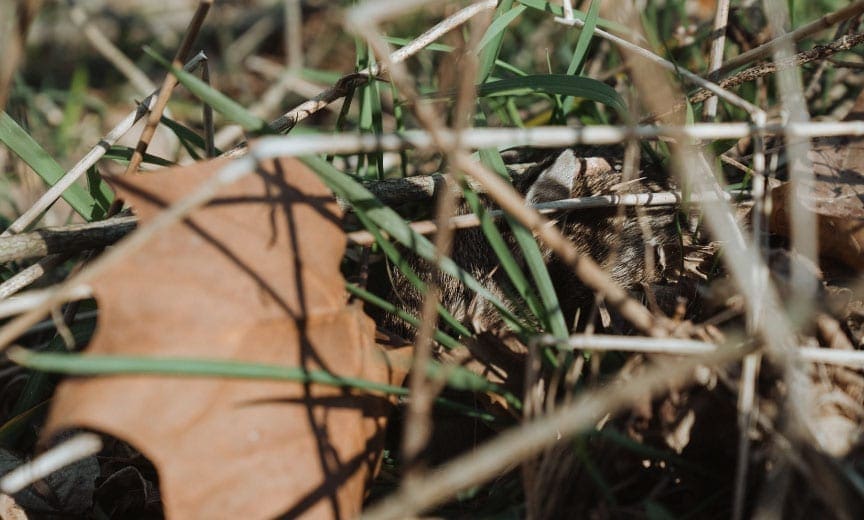
Regarding predators , it’s a hard-knock life for a cottontail. Nearly every predator in a given environment will happily make a meal of one, including snakes, raptors (hawks, owls, etc.), mink, weasels, fishers, bobcats, foxes, coyotes, and wolves (Minnesota DNR 2020). Even skunks and raccoons will eat helpless kits they happen to find. But since each rabbit can produce so many litters each year, the predation usually doesn’t keep up enough to impact them. Of course, people also hunt cottontails – more on that below.
Range and Habitat of the Eastern Cottontail Rabbit
There are a few species within the cottontail rabbit family in America, but the eastern cottontail is the most abundant and widespread. It occurs across the eastern half of North America, from Canada down through Mexico and Central America. Some populations also exist in the Pacific Northwest. And while some do occur in the southwest desert region, the desert cottontail or jack rabbits are better suited for such an environment.
Eastern cottontails are habitat generalists and can survive in many different environments or cover types. They are common sights in farm fields, orchards, hedgerows, and backyards, but they survive in remote woodland areas too. Old fields, grasslands, shrublands, and swamps can all be home to a resourceful rabbit. An important habitat feature within each of these cover types includes rock piles, dense brush, and woody debris. Rabbits need safe spaces to build their nests and hide from their many predators. Abandoned farms with machinery and outbuildings can also be hot spots for rabbits.
Conservation Issues for the Eastern Cottontail Rabbit
The eastern cottontail is very common throughout their range in North America. They are listed as globally secure and of Least Concern by the IUCN Red List (NatureServe 2020). While some of its cousins have some conservation concerns, the eastern cottontail is doing well. However, there are a few issues that can affect them. For example, they can contract cottontail rabbit papilloma virus (CRPV), which causes bizarre horn-like growths to occur on their heads (the whole “jackalope” image). If they get large enough, they may interfere with eating and cause starvation. Cottontails can also carry tularemia, which is an infectious disease caused by a bacterium transmitted by ticks and flies. Rabbits and hares are both susceptible to it and outbreaks can be locally devastating. Cold or wet weather can also spell doom for young rabbits. Combined with predation, most cottontails don’t survive past one year in the wild.
Hunting Opportunities for the Eastern Cottontail Rabbit
Rabbit hunting used to be pretty commonplace on most farms across the country. Yet while the tradition has declined significantly, they are still a popular small game animal to hunt and to eat. Think something as delicious as braised barbecue cottontail lettuce wraps. And they’re sure fun to chase around the woods, too. Like a flushing grouse, long walks can suddenly result in an eruption from the brush and the excitement of seeing a fleeing rabbit. Here’s how to get started.
There are two ways you can hunt cottontails: shotgun or rimfire rifle. If you’re a real glutton for punishment, you could try archery too I suppose. A shotgun obviously gives you the best chance of putting a rabbit in your field vest. The spread-out pellet pattern allows some flexibility when looking at a running cottontail. Anything from a 12-gauge to a .410 can work fine, with shot sizes ranging from 4 to 7. A rimfire rifle, such as a .22 LR, is also effective. But you need to take things really slowly and treat it like a spot and stalk hunt rather than a typical small game hunt. The main advantage with a rifle is that a head shot doesn’t ruin any meat.
You don’t necessarily need a dog to hunt rabbits, although a beagle or versatile hunting dog may increase your encounters. Start by walking along high priority areas that seem to have the right habitat features (e.g., brush pile along a field edge with a briar patch in close proximity). Hunting early or late in the day usually produces the most encounters. If there’s fresh snow on the ground, start scanning for recent tracks or droppings, which may let you know when you’re getting closer. Unlike snowshoe hares, cottontails keep their dark coat year-round, which can really make them stand out on a snowy hunt. While cottontails primarily rely on their camouflage to avoid detection, they will run when they feel threatened. As they flush from cover, they will usually take off running fast, and may stop some distance away to assess the danger. Don’t let that opportunity pass for too long or you may miss out. If you are successful in bagging a rabbit, take some precautions. Since they are potentially carriers of a few diseases, wear gloves while handling and field dressing them.
If you love the thrill of hunting upland birds and have never tried rabbit hunting before, you’re missing out. It truly is a very exciting hunt, and you also end up with more meat than a grouse or woodcock, which is always a perk.



